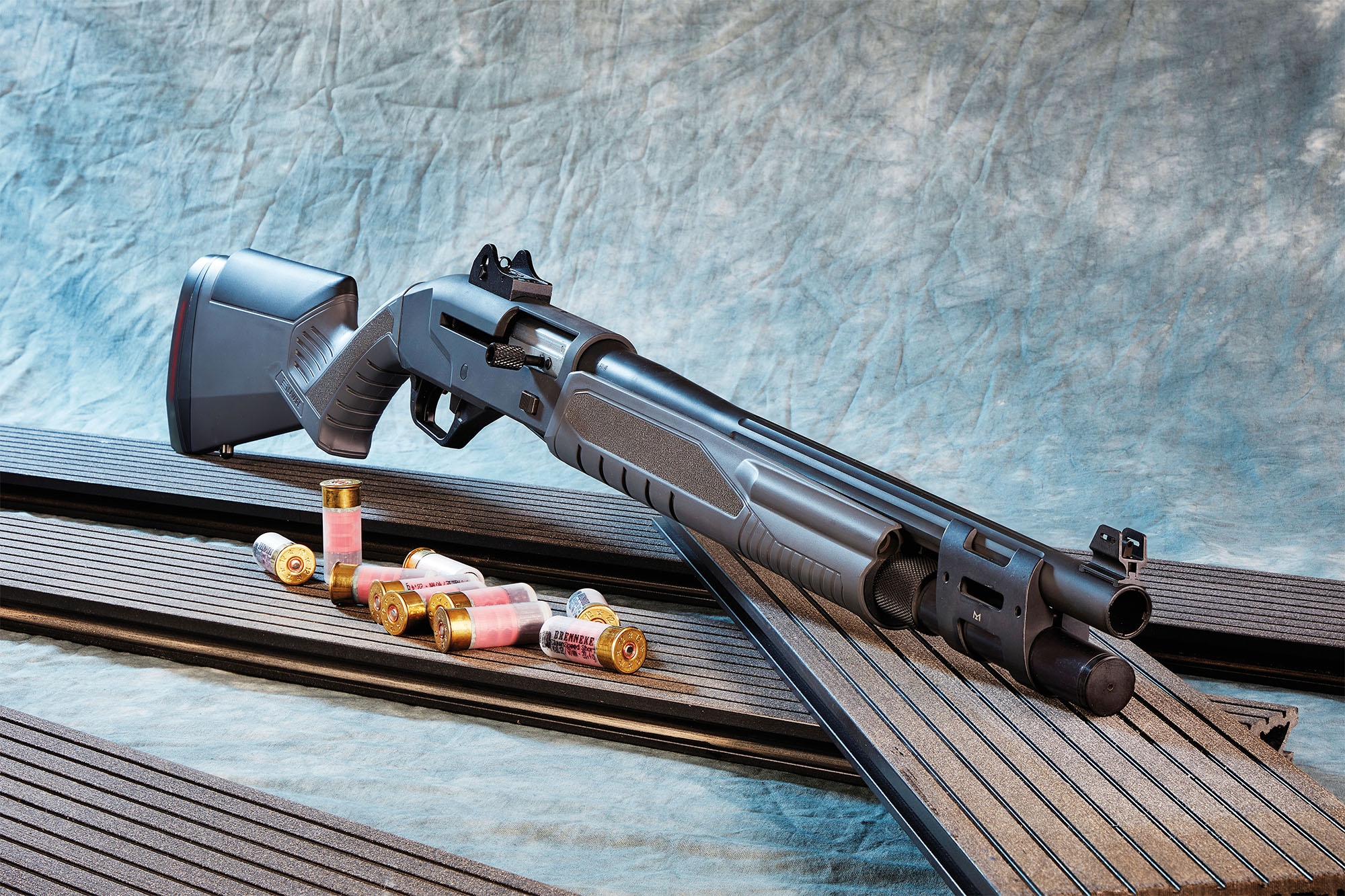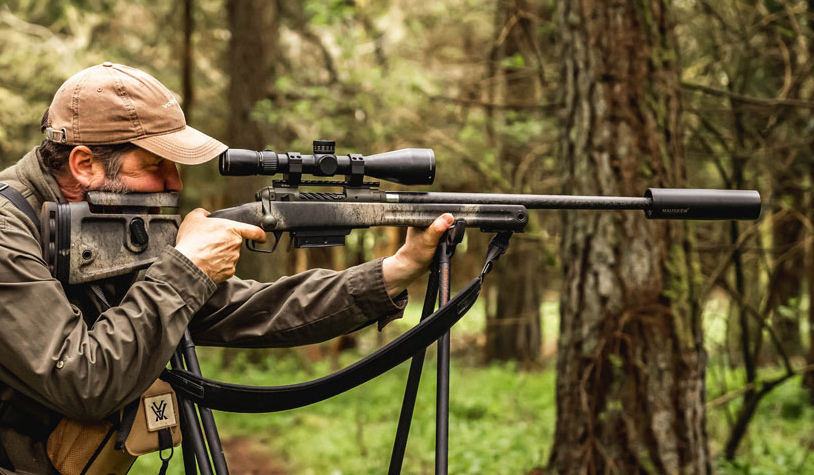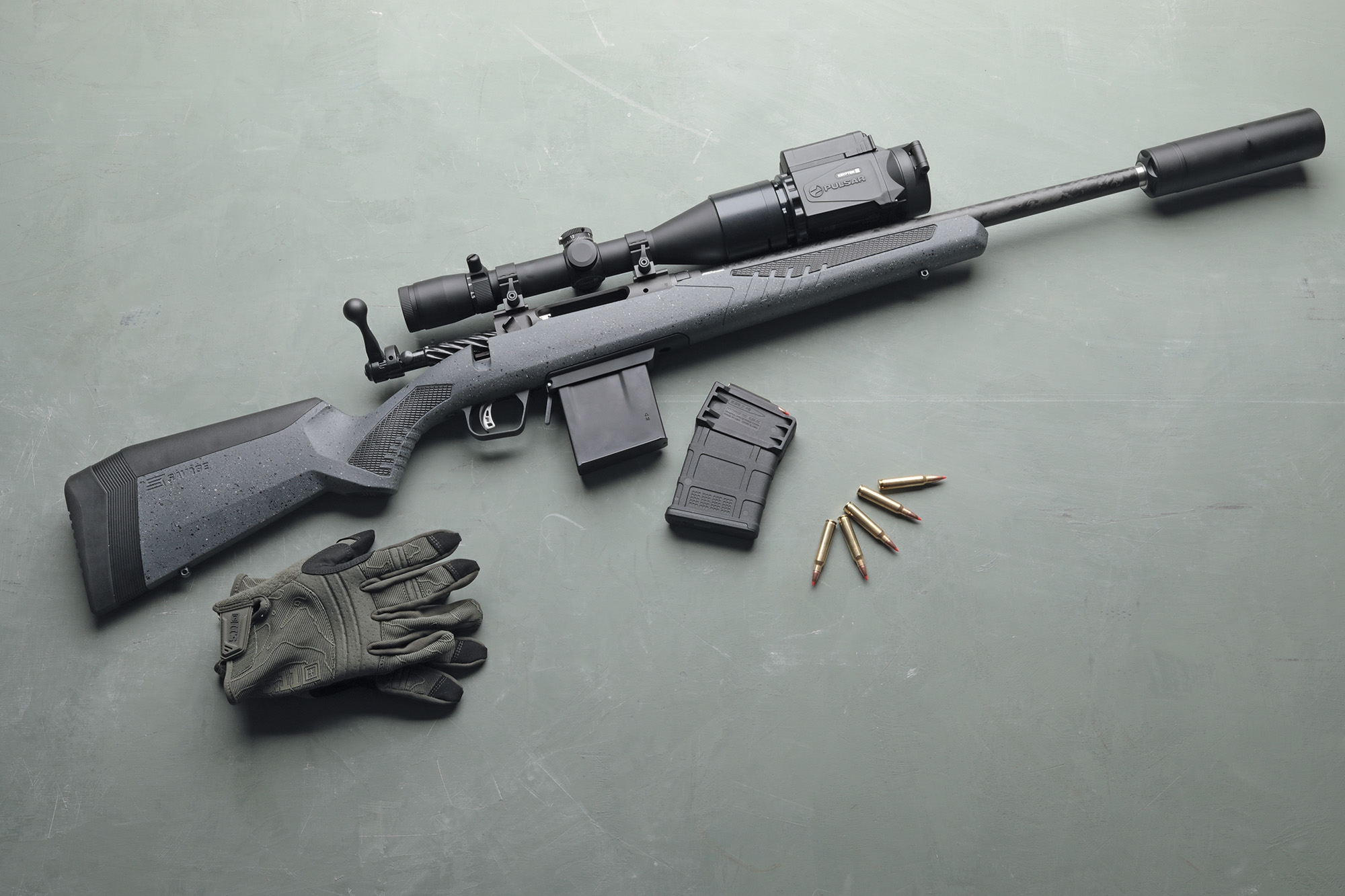Savage Arms is a well-known gun manufacturer founded in 1894 by Arthur Savage in Utica, in the US state of New York, which has been based in Massachusetts since 1946 and has a branch in Lakefield, in the Canadian province of Ontario. At times one of the largest gun manufacturers in the world, from the end of the 20th century Savage focussed primarily on the 110 bolt-action rifle series, conceived by Nicholas Leverett Brewer and introduced in 1958 (four years before the Remington 700). This model, built in dozens of variants, is the oldest continuously manufactured bolt action rifle in North America. So we thought another 110 was coming when they announced "a new Savage". But nothing of the sort: it was a version from a new series of lever-action repeaters. More precisely: the Revel Classic which, together with its sister model the Revel DLX, is positioned in the attractive market segment of rimfire lever guns. Savage Arms Canada manufactures the duo in .17 HMR, .22 WMR and .22 LR.

However, this takes Savage back to its own beginnings. With the Model 99, the factory had already been manufacturing a well-known lever-action repeater in 15 rifle calibers for a good 100 years. These guns were something special, as they came with a firing pin system and were not fed from a magazine tube placed under the barrel, as was usually the case with lever-actions. Instead, 99s built until 1965 had a fixed rotary magazine, after which a simpler box magazine that could be removed at the push of a button was introduced. Both of these features made the 99 very popular with hunters, as the cartridges were loaded from above, one on top of the other, giving them complete freedom when it came to the bullets. It was also possible to use pointed bullet cartridges, which is not possible with tubular magazines with their stacked cartridges for safety reasons.
The test gun: Savage Revel Classic in .22 LR

While early 99 Savages in particular were considered true luxury products, the tested Revel Classic in .22 LR is obviously aimed at a different group of buyers. It is intended as a fun and recreational rifle for plinking, target shooting and small game hunting. If you want to use the Revel on rabbits or predators, you can do so at any time after fitting a scope. The basic design of the Revel Classic is based on what has always been considered typical for lever-action rifles: external hammer, tubular magazine under the barrel and two-piece stock. With this, however, Savage is deliberately bucking the trend of tactically upgrading lever guns, for example with folding or collapsible stocks made of polymer and aluminum, supplemented by tubular handguards with M-Lok mounting options. Not here. We have a very old school walnut (in this case: Turkish walnut), cleanly oiled, satin-finished stock with straight orizontal edges – so neat and deliberately simple in its execution, yet striking in design and useful in handling: at the front, the edges serve as a finger rest, while at the back they form a subtle cheek piece on both sides of the classically straight stock. This is topped off with a perfectly adapted polymer butt pad. The round 18-inch barrel, which tapers towards the muzzle, is solid. It is a good 19 mm thick at the rear and 17 mm at the front. This is more than the usual 14 to 15 mm for some Sporter barrels. The barrel, magazine tube and controls have a matte black blued finish, while the receiver is powder-coated. This leads to the material of the receiver. Dieter Metz, one of the two authors, comments: "The fact that the Revel Classic is a fairly inexpensive lever-action repeater is also evident from the fact that the receiver is not milled from steel, but is probably die-cast from an aluminum or zinc alloy. This does not necessarily detract from the durability and quality. This is demonstrated by the many Erma lever-action rimfire rifles, for example, which have been providing reliable service for decades." What's more, the aluminum receiver is closed at the top, just like the Marlin, and cases are positively ejected to the side. The fact that the receiver is slightly longer than expected for .22 LR is probably due to the fact that the .22 WMR and .17 HMR versions are based on the same action. The remaining metal parts were made of steel, as shown by the magnet check.
Handling and accuracy of the Savage Revel lever-action rifle

The Savage Revel Classic made a very good impression right from the start: when shouldered, it sits firmly, and the eye is directly on the sight line with no need of lengthy adjustments. This is due to the thick, muzzle-heavy barrel as well as the beautiful stock, with the forend feeling slightly fuller and therefore more grippy than is typical for .22 lever-action rifles. The metal surfaces, with their matte black finish, appear durable and well-made. The slightly creeping trigger breaks well at a measured 870 grams. The crossbolt safety above it reliably prevents the hammer from releasing a shot. The Revel's clever feature: it is a takedown gun, meaning it can be disassembled into two parts. After lowering the lever, two retaining pins running through the bottom of the action can be pushed out to the right (with a cartridge, for example) and the "forend/barrel/magazine/ upper receiver" and "lower receiver/rear stock" assemblies can be separated from each other. The two pins are secured to the right side of the receiver to prevent loss. Reassembling the disassembled gun is just as easy.

The Revel has a 12-round magazine consisting of an outer blued steel tube and an inner brass tube. The latter is attached to the outer tube by a bayonet mount. Once unlocked, the brass tube can be pulled out to reveal the protruding plastic follower attached to the magazine spring. With the inner tube removed, one cartridge at a time can be inserted. Approximately five centimeters above the forend, the outer tube features a cartridge-shaped loading gate. After loading the twelve cartridges, the inner magazine tube is inserted. This pushes the inner tube over the cartridge column, compressing the magazine spring and building up pressure. When cycling the action, this pressure forces the follower to advance the cartridge to the lifter - the element that raises the cartridge behind the barrel breech so that the advancing bolt can chamber it. The loading method through such a magazine port has been common since the end of the 19th century for .22 lever-action and pump-action rifles.

From Dieter Metz's test report: "After a rough sighting-in on the 25-m line, we moved to the 50-m line to shoot at the targets. The drift-adjustable bead sight and the height-adjustable buckhorn rear sight provided a clear target image. Unfortunately, I found that the test rifle still shot a good 20 cm too high despite the lowest rear sight setting. Nothing could be done without replacing the sights; unlike with low sights, you can't simply file down the front sight. I then mounted a Leupold VX-Freedom Rimfire 2-7x33 riflescope using a Picatinny rail and Leupold PRW rings. However, unlike many others, the mount couldn't be attached directly to an integrated rail. Instead, a Picatinny rail (not included) had to be screwed onto the receiver, which has four threaded holes, before mounting rings and the scope could be attached. Then I was thrilled: the scope was a perfect match for the slim Revel. With the crystal-clear optic and the fine reticle, the Revel could be quickly zeroed from the sandbag rest. I measured the groupings shot from the sandbag rest on the targets at 50 meters. The Revel performed flawlessly. All cartridges of the 10 tested ammunition types were fed, fired and ejected to the side without any malfunctions. The groups speak for themselves, in a positive sense."
The lever loop of the Savage Revel

The smooth action was simply great. What we debated during the test, however, was the oversized loop. Initially, the play between the fingers and the loop seemed excessive. This slowed down the cycling speed because the hand seemed to lose contact with the frame. But why all this space? Let me explain: in 1939, actor John Wayne first wielded a Winchester M 1892 with a huge loop in the western Stagecoach allowing him to spin the gun in a circle while cycling the action. This example then became popular in TV series of the 1950s. Since then, underlevers with large loops have also been found in the hands of many other film stars. For a long time, such "large lever loops" were considered a Hollywood gadget, great for show, but useless in real life. It took until the turn of the millennium before the industry started to play with the loop shape.
Today, it is good form for manufacturers to present something distinctive in the loop design. This is exactly what Savage Arms (Canada) did with the Revel Classic: to put it simply, its loop, viewed from the side, forms an irregular triangle. This makes it possible to operate the action even when wearing thick gloves. But because of the triangular shape, the lever tapers towards the end and becomes narrower at the front. In combination with the butter-smooth action, this results in the following sequence for quick cycling: instead of simply operating the lever loop with the three fingers of the shooting hand inside, move the middle finger at the front of the loop. In this way, you can cycle the Revel quickly without the hand losing contact with the steel in the wide center of the lever loop.
Savage Arms Revel Classic technical specifications and price
| Model: | Savage Arms Revel Classic |
Caliber: | .22 LR |
Magazine Capacity: | 12 rounds |
Barrel Length: | 18"/467 mm |
Overall Length: | 930 mm |
Twist Rate: | 1:12" (1:406 mm) |
Trigger Pull Weight: | 870 g |
Weight: | 2,700 g |
Price (MSRP in the US): | $439 |
Equipment: | Lever-action rifle with tubular magazine. Takedown. Walnut stock, oil finish and polymer butt plate. Powder-coated aluminum receiver. Barrel, magazine tube, controls made of steel and blued. Height-adjustable buckhorn rear sight, drift-adjustable bead front sight. Cardboard box with instruction booklet (English), safety flag and padlock. |
The final reckoning: our conclusion on the Savage Revel
If you are looking for a truly inexpensive, accurate, no-frills lever-action rifle with the smoothest action at an affordable price, this is the right choice for you. If you want to invest more, take a look at its sister model, the Revel DLX, which has a more elaborate stock, checkering, decorative stock cut-outs and a pistol grip (price: $539). The duo proves that the market for affordable rimfire .22 LR lever-action rifles is constantly evolving – after all, life has become expensive on both sides of the Atlantic. Guns like those in the Revel series make .22 LR shooting more attractive and fun anyway.










